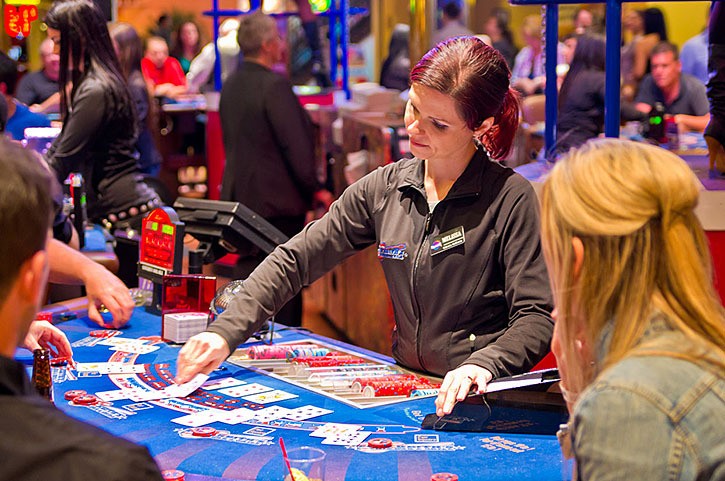A new study by a pair of UBC psychology researchers suggests problem gamblers and drug addicts produce the same kind of brain activity when going through a craving, and that effective treatments for both health problems could be the same.
Nineteen people with a gambling disorder underwent an MRI brain scan while they looked at images of slot machines and roulette, as well as neutral images. Nineteen healthy volunteers also underwent the scan while looking at the same images.

After participants rated their craving level, postdoctoral research fellow Eve Limbrick-Oldfield and psychology professor Luke Clark compared the gamblers’ responses to the gambling photos with the responses to the neutral photos. They found the gamblers reported a higher level of craving after seeing the gambling photos.
In those with the addiction, the gambling cues also increased brain activity in parts of the frontal cortex and a part of the brain called the insula — linked to craving and self-control in drug addiction.
The study suggests neurobiological similarities between problem gambling and drug addiction.
“This mysterious and poorly understood part of the brain has been identified as a key hub for craving in past research,” Limbrick-Oldfield said. “For example, smokers who have sustained brain injuries affecting their insula have been found to be more likely to quit smoking.”
Clark said the findings reveal the powerful effect of cues in triggering cravings for problem gamblers.
“Everything from the lights and the sounds of the slot machines to the smell of the casino are cues that, even after years of abstinence from gambling, can trigger a craving,” he said. “Being able to control one’s response to these cues is a crucial part of avoiding relapse.”
Clark said the findings also highlight the potential for treating gambling disorder by targeting the insula, and for testing new treatments and the ability to tone down these responses.
The researchers are now looking at the effectiveness of naltrexone – a medication used to treat alcohol and heroin addiction – and how it changes these brain responses in problem gamblers.
This involves giving another group of people with gambling problems both placebo supplements and naltrexone for four days, and then showing them the same sorts of neutral and rewarding images, Limbrick-Oldfield said.
The pair is also building on how simulation found in a casino – like machine sounds, and bright lights – affect brain activity for problem gamblers by creating playing atmospheres in different settings.
@ashwadhwaniashley.wadhwani@bpdigital.caLike us on Facebook and follow us on Twitter.

